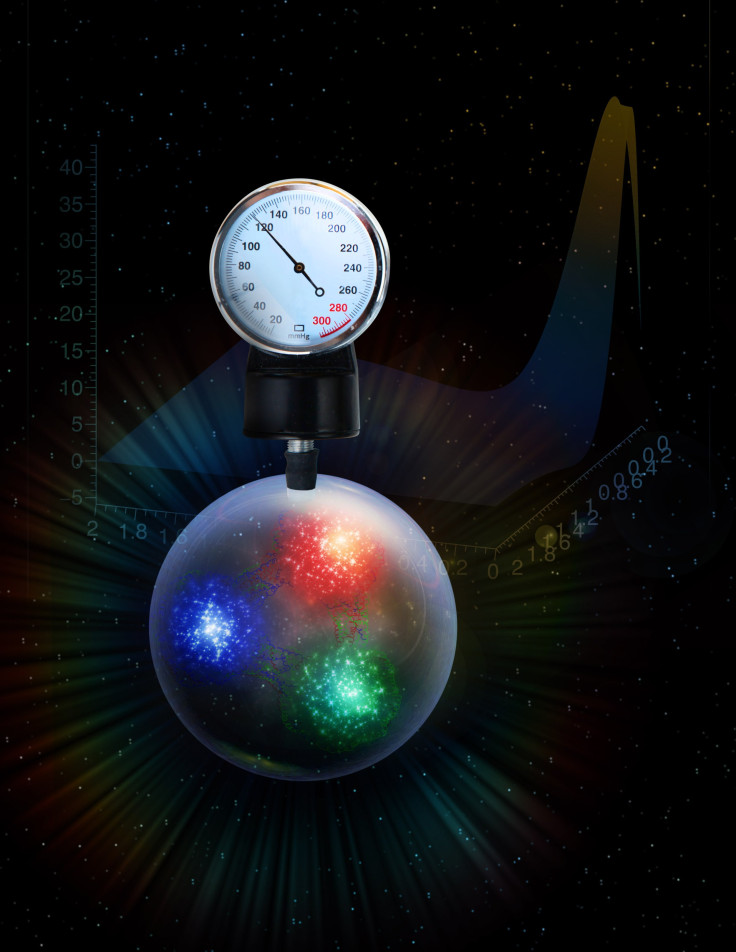Pressure Inside Protons Is 10 Times That In Center Of Neutron Stars

Neutron stars are the densest objects known in the universe, and the almost-impossible-to-imagine pressure at their centers would certainly be enough to crush or tear apart anything that was unfortunate enough to find itself there. But it turns out that the relatively humble proton is a whole order of magnitude greater than neutron stars when it comes to pressure on the inside.
Nuclear physicists from the Department of Energy’s Thomas Jefferson National Accelerator Facility (Jefferson Lab) accomplished, for the first time, the feat of measuring the pressure distribution inside a proton — one of the three larger subatomic particles, along with the electron and the neutron, that makes up all atoms. And they found that quarks — elementary particles, three of which come together to make up protons — experience, near the center of protons, pressure of 100 decillion (10 followed by 34 zeros, or one zero short of a trillion trillion trillion) Pascal. That is about 10 times greater than the pressure at the heart of neutron stars.
“We found an extremely high outward-directed pressure from the center of the proton, and a much lower and more extended inward-directed pressure near the proton’s periphery,” Volker Burkert, Jefferson Lab Hall B leader and a coauthor on a paper describing the measurements, explained in a statement Wednesday.
The quarks that make up a proton are held together by the strong force — one of the four fundamental forces in physics — which is carried on another elementary particle called the gluon. The strong force inside protons defines the pressure distribution.
“Our results also shed light on the distribution of the strong force inside the proton. We are providing a way of visualizing the magnitude and distribution of the strong force inside the proton. This opens up an entirely new direction in nuclear and particle physics that can be explored in the future,” Burkert said in the statement.
Making this measurement required putting together two separate theoretical frameworks. The process involved scattering electrons off quarks inside protons, which then emitted high-energy photons. These photons were detected along with the scattered electrons and the recoiling protons, and observing them allowed researchers to measure the pressure distribution inside the protons, a measurement the Jefferson Lab statement said was “once thought impossible to obtain.”
“This is the beauty of it. You have this map that you think you will never get. But here we are, filling it in with this electromagnetic probe,” Latifa Elouadrhiri, a Jefferson Lab staff scientist and coauthor on the paper, said.
Next, the researchers hope to apply the technique to reduce the uncertainties in their analysis, and also to discover other mechanical properties of the proton, such as its internal shear force and its mechanical radius.
“This work opens up a new area of research on the fundamental gravitational properties of protons, neutrons and nuclei, which can provide access to their physical radii, the internal shear forces acting on the quarks and their pressure distributions,” the paper’s abstract says.
The paper was published online Wednesday in the journal Nature, titled simply “The pressure distribution inside the proton.”
© Copyright IBTimes 2024. All rights reserved.




















